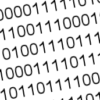Monday, November 18, 2013
Graphics: Isocontoured Lines
In this series dedicated to 3D rendering, this is a preliminary post describing how to extract vectorial isocontoured lines from an image. One of the most popular algorithm is the Marching Squares algorithm.
The next step will be the computation of isosurfaces...
Friday, November 15, 2013
3D Computer Graphics: TOC
Table of Contents : Visualization of 3D Data
This series of posts is dedicated to the various techniques and algorithms used to visualize 2D and 3D data...
Thursday, November 14, 2013
Fourier: Convolution and Deconvolution
Convolution is not an operation only specific of real space filters. You can use it in frequency space. Its counterpart - the deconvolution - is also very popular to enhance images.
Friday, November 8, 2013
Fourier Series: Several functions
Second post dedicated to the Fourier series [Link] with several examples of classical periodic functions.
Thursday, June 20, 2013
Learning Tomography: Playing with dots
Last post [Link] was devoted to the problem of rotation center during the reconstruction process. Here is a small exploration of the various patterns that can be observed...
Monday, June 3, 2013
Learning Tomography: Rotation script
In a previous post [Link], I describe artifacts due to non-centered projections in tomography. For those interested, here is the procedure to simulate such a defect in a sinogram.
Monday, April 8, 2013
Learning Tomography: Non-centered projections
Why is my reconstruction so bad ?
This question often arises when the resulting image (or volume) is so disappointing... Specially when you are working with experimental projections, new artifacts and defects are appearing never met before in this series Learning Tomography where all the images are always perfect.
Thus, it is time to show some of these defects... to understand how to fix them.
Wednesday, April 3, 2013
Gray-level images and morphology
In MM [TOC], the gray-level images are considered as a stack of binary images, what they called level sets. Here is a small demonstration using ImageJ and an application to dilation.
Monday, March 18, 2013
Learning Tomography: Blur effect
In the simple Back-projection technique, the image appears blurry and we need to pre-filter the sinogram with a ramp filter before computing the 2D reconstruction. Why is this blur effect not observed in the Direct Fourier Reconstruction technique?
Labels:
3D,
Fourier,
ImageJ,
javascript,
tomography
Monday, March 11, 2013
3D sample: The Borrromean Rings
In the collection of samples I used for tomography, there is the so-called "Borromean Rings" composed of three interleaved tori [Link].
Friday, March 8, 2013
Learning Tomograhy: New version of back projection
In this series Learning Tomography, I mentioned a backProjImproved.js script in several posts to compute a 2D reconstruction according to the backprojection technique.... Unfortunately, I have never published it. Here it is...
Thursday, March 7, 2013
Analyze
Table of Contents
Analyze objects of interest is the last step of a usual pipeline of image processing and allows to quantify or describe image features...
Monday, March 4, 2013
Crazybiocomputing; The mini-games
This blog CrazyBiocomputing − dedicated to image processing using ImageJ − is completed by a series of mini-games located in another CrazyBiocomputing web page [Link]. This is a good opportunity to practice with ImageJ and work/understand the various concepts described in the posts of this blog. Here are some explanations about how it works...
Friday, February 22, 2013
Learning Tomography: DFR with Fourier - Part II
Second (and final) part of the implementation of the Direct Fourier Reconstruction with Fourier − instead of Hartley − Transform...
Thursday, February 21, 2013
Learning Tomography: Interpolation in Fourier Rec.
After zero-padding [Link], there is another kind of improvement of our Direct Fourier Reconstruction implementation: The interpolation scheme.
Indeed, during the polar/cartesian conversion, we need to interpolate the sinogram values to exactly fit the cartesian 2D Fourier space. The choice of an interpolation scheme can greatly improve the resulting 2D reconstruction.
Labels:
3D,
Fourier,
ImageJ,
javascript,
tomography
Friday, February 15, 2013
Learning Tomography: DFR with Fourier Transform
In this series dedicated to Direct Fourier Reconstruction (DFR), here is a new version based on Discrete Fourier Transform rather than the Hartley Transform...
Labels:
3D,
Fourier,
ImageJ,
javascript,
tomography
Thursday, February 14, 2013
Programming in JavaScript
Labels:
ImageJ,
javascript,
programming,
script,
TOC
Tuesday, February 12, 2013
Hit-or-miss: Do It Yourself
After an introduction of the Hit-or-miss operator [Link], it is time to see how we can implement this kind of tool in ImageJ with JavaScript....
Thursday, February 7, 2013
Hit-or-Miss in ImageJ
Continuing the exploration of the Hit-or-Miss operator [Link], this second post shows how to use ImageJ for the detection of nodes and leaves in a graph using an approach similar to a Hit-or-Miss.
Wednesday, February 6, 2013
Hit-or-miss
In Mathematical morphology, the Hit-or-Miss operator is useful to describe the topology of a graph-like object. Even though this is not implemented − by default − in ImageJ, we can obtain a similar result...
Monday, January 14, 2013
Learning Tomography: Advanced DFR Implementation
The Direct Fourier Reconstruction (DFR) implementation previously published (Part II: [Link]) works correctly. However, the polar to cartesian conversion is not very efficient because there are missing pixels in the 2D Fourier space. Modifying the source code can easily fixed this problem...
Labels:
3D,
Fourier,
ImageJ,
javascript,
tomography
Thursday, January 10, 2013
Learning Tomography: Fourier Rec. in Action
In this (long) series of posts dedicated to Direct Fourier Reconstruction, just a small break with a movie summarizing the steps to compute a 2D reconstruction image...
Labels:
3D,
Fourier,
ImageJ,
javascript,
tomography
Monday, January 7, 2013
Learning Tomography: Zero Padding
In the last post [Link], we were able to reconstruct our image. However, the result was encouraging but a little bit disappointing. Fortunately, this can be improved by allowing the computation of Fourier transforms with higher precision.
Labels:
3D,
Fourier,
ImageJ,
javascript,
tomography
Friday, January 4, 2013
Learning Tomography: Fourier Rec. - Part II
In this series dedicated to Direct Fourier Reconstruction technique, here is the second (and final) part of the implementation corresponding to the filling of the 2D Fourier space.
Labels:
3D,
Fourier,
ImageJ,
javascript,
tomography
Thursday, January 3, 2013
Learning Tomography: Fourier Rec. - Part I
First part of this series dedicated to the implementation of Direct Fourier Reconstruction technique: the computation of the Fourier transform of the sinogram.
Labels:
3D,
Fourier,
ImageJ,
javascript,
tomography
Subscribe to:
Posts (Atom)










